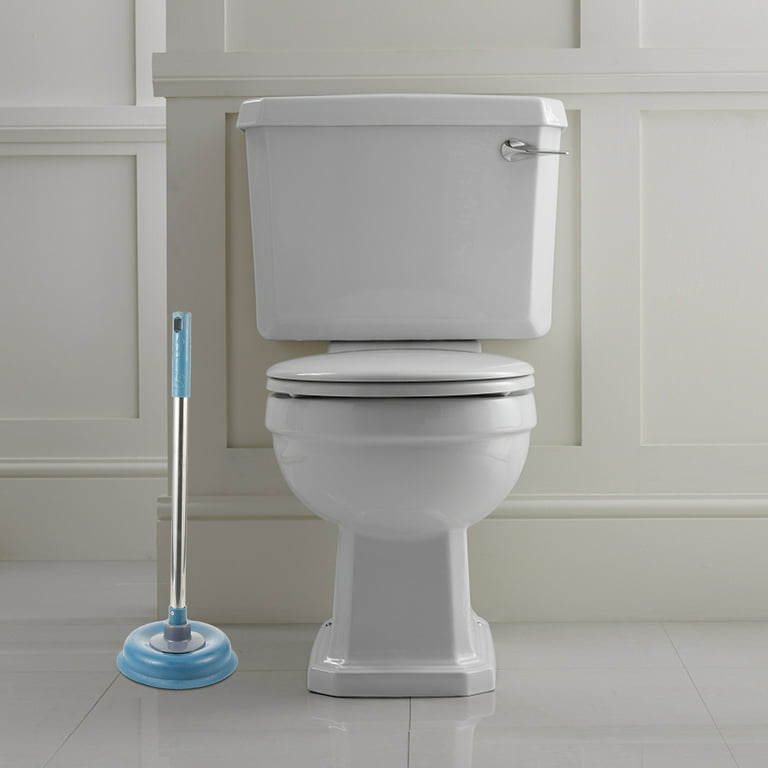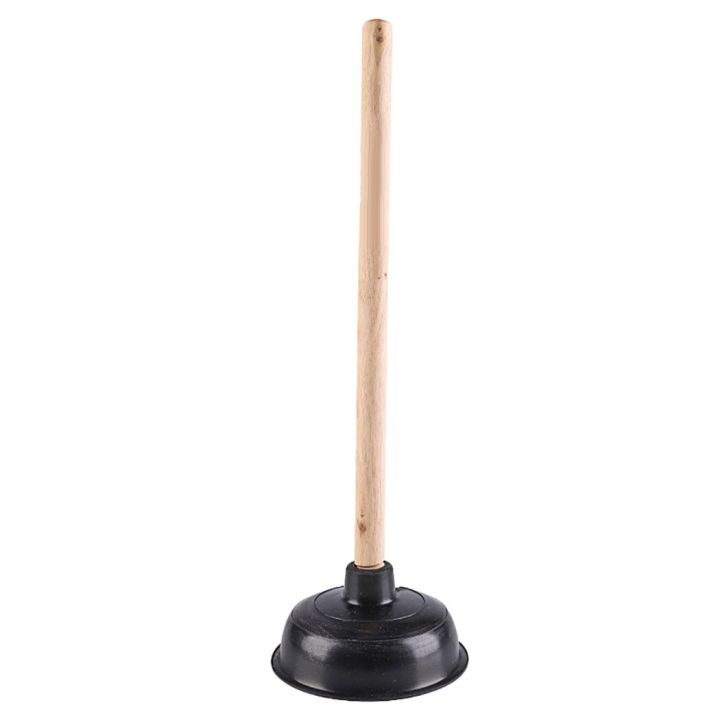How to Master Plungers and Drain Cleaner: Expert Advice
How to Master Plungers and Drain Cleaner: Expert Advice
Blog Article
We have discovered the article relating to A Guide to Plungers (and How to Use Them) listed below on the net and thought it made good sense to share it with you on this page.

Introduction
Correct upkeep of household drains is vital for preventing clogs and guaranteeing smooth water circulation. One of the key devices in every house owner's toolkit is the plunger, together with different drainpipe cleansers made to tackle stubborn blockages properly. This write-up explores how to make use of bettors and drainpipe cleaners properly to keep your drains pipes flowing freely.
Section 1: Understanding Plungers
Sorts of Plungers
There are several sorts of bettors available, each created for various sorts of drains and blocks. One of the most typical kinds include cup bettors, flange bettors, and accordion bettors.
Just How Plungers Work
Bettors deal with the concept of developing pressure and suction to dislodge blockages. When properly used over a drain, they produce a vacuum that can pull out debris or separate clogs.
Selecting the Right Plunger
Selecting the ideal plunger relies on the kind of drainpipe and the nature of the obstruction. Cup plungers are excellent for sinks and bathtubs, while flange plungers are much better suited for commodes because of their style.
Common Mistakes with Plungers
Staying clear of these mistakes ensures effective plunging: inappropriate seal around the drain, inadequate pressure, and unclear surrounding debris.
Section 2: Utilizing Plungers Successfully
Prep work
Before plunging, guarantee the plunger covers the drainpipe totally and creates a limited seal. Clear any kind of noticeable particles around the drainpipe opening.
Method
Begin with gentle diving motions to construct suction. Boost pressure slowly, utilizing a consistent rhythm. Repeat as needed up until the drain gets rid of.
Fixing Tips
If plunging does not work, attempt changing the seal, using petroleum jelly for a better seal, or using a different sort of plunger.
Area 3: Comprehending Drain Cleaners
Types of Drainpipe Cleansers
Drain cleaners can be chemical or chemical. Chemical cleansers utilize strong chemicals to dissolve clogs, while chemical cleaners utilize natural enzymes to break down raw material.
How Drain Cleansers Job
Chemical cleaners respond with blockages to liquify them, while enzymatic cleansers break down natural products like hair and oil without hurting pipelines.
Security Considerations
Always put on gloves and eye security when utilizing chemical drain cleansers. Ensure ample air flow and comply with manufacturer directions carefully.
Eco-Friendly Alternatives
Think about using vinegar and baking soda or enzyme-based cleaners for environment-friendly choices that are safer for pipelines and the setting.
Area 4: Making Use Of Drainpipe Cleansers Effectively
Application Methods
Put chemical cleaners straight right into the drain opening. Enable them to benefit the recommended time before purging with hot water. Enzymatic cleaners must rest overnight.
Safety measures
Stay clear of blending various sorts of cleansers, as this can create hazardous fumes. Never ever make use of chemical cleansers in conjunction with a bettor, as splashing can take place.
Handling Persistent Blockages
For consistent obstructions, take into consideration utilizing a pipes serpent or calling a specialist plumbing professional to prevent damage to pipes.
Conclusion
Finally, comprehending how to utilize plungers and drain cleaners effectively is important for maintaining healthy pipes systems. By selecting the right devices and methods, property owners can take on small clogs and protect against major pipes issues down the line.
How To Properly Use A Plumbing Snake To Clear Drains
When any drain clogs in our home arise, we tend to gravitate toward the plunger and little else. In cases where the plunger and its vacuum-created pressure are not able to clear clogs, many immediately move to harmful chemicals or simply call their plumber to fix the issue.
we’re happy to help with all drain cleaning needs and concerns. This includes informing you on a few other home remedies you may have at your disposal for minor to moderate clogs, one of which is the use of a plumbing snake. Many people have never used one of these before – let’s go over the steps to take when your drain clogs and you have a plumbing snake available.
Attempt Plunger Use
The first step here, as we noted above, should indeed be to grab your plunger when you notice a drain clog and attempt to resolve it this way. If you’re unsure how to use a particular type of plunger, our plumbers can answer any questions you have. If this doesn’t do the trick, however, you move on to the snake.
Locate And Prepare Snake
A plumbing snake is a metal or plastic device that’s generally about a quarter of an inch thick. It’s design with significant extensions, meant to reach down into your clogged drain and push the clog out. Snakes also contain drain augers that will latch onto and push stubborn blockages.
If your plunger doesn’t clear a clog, locate your snake and bring it to the drain in question. We also recommend keeping a bucket nearby to collect the clog once you pull it out, plus we’d advise wearing goggles and possibly protective gloves.
Feed Snake
Once you’re ready to go, feed the snake slowly down the drain, using the crank device it comes with to keep it moving until it finds the clog. Once this happens, much of the clog will be latched onto the coil so you can pull it out, while the rest will simply break up and flow downward.
Detach Debris
Remove the snake slowly from the drain, and once you’ve done so, pick off any debris that’s stuck to the coil. This is another area where wearing gloves is a must.
Flush Drain
Finally, take a few minutes to ensure the snake has done its job correctly. If you’ve been using it on a toilet, flush the toilet a couple times and make sure everything flows well. If you’ve used it on a different drain, flush it with some room temperature water.
https://www.mybuddytheplumber.com/blog/how-to-properly-use-a-plumbing-snake-to-clear-drains/

Application Methods
Put chemical cleaners straight right into the drain opening. Enable them to benefit the recommended time before purging with hot water. Enzymatic cleaners must rest overnight.
Safety measures
Stay clear of blending various sorts of cleansers, as this can create hazardous fumes. Never ever make use of chemical cleansers in conjunction with a bettor, as splashing can take place.
Handling Persistent Blockages
For consistent obstructions, take into consideration utilizing a pipes serpent or calling a specialist plumbing professional to prevent damage to pipes.
Conclusion
Finally, comprehending how to utilize plungers and drain cleaners effectively is important for maintaining healthy pipes systems. By selecting the right devices and methods, property owners can take on small clogs and protect against major pipes issues down the line.
How To Properly Use A Plumbing Snake To Clear Drains
When any drain clogs in our home arise, we tend to gravitate toward the plunger and little else. In cases where the plunger and its vacuum-created pressure are not able to clear clogs, many immediately move to harmful chemicals or simply call their plumber to fix the issue.
we’re happy to help with all drain cleaning needs and concerns. This includes informing you on a few other home remedies you may have at your disposal for minor to moderate clogs, one of which is the use of a plumbing snake. Many people have never used one of these before – let’s go over the steps to take when your drain clogs and you have a plumbing snake available.
Attempt Plunger Use
The first step here, as we noted above, should indeed be to grab your plunger when you notice a drain clog and attempt to resolve it this way. If you’re unsure how to use a particular type of plunger, our plumbers can answer any questions you have. If this doesn’t do the trick, however, you move on to the snake.
Locate And Prepare Snake
A plumbing snake is a metal or plastic device that’s generally about a quarter of an inch thick. It’s design with significant extensions, meant to reach down into your clogged drain and push the clog out. Snakes also contain drain augers that will latch onto and push stubborn blockages.
If your plunger doesn’t clear a clog, locate your snake and bring it to the drain in question. We also recommend keeping a bucket nearby to collect the clog once you pull it out, plus we’d advise wearing goggles and possibly protective gloves.
Feed Snake
Once you’re ready to go, feed the snake slowly down the drain, using the crank device it comes with to keep it moving until it finds the clog. Once this happens, much of the clog will be latched onto the coil so you can pull it out, while the rest will simply break up and flow downward.
Detach Debris
Remove the snake slowly from the drain, and once you’ve done so, pick off any debris that’s stuck to the coil. This is another area where wearing gloves is a must.
Flush Drain
Finally, take a few minutes to ensure the snake has done its job correctly. If you’ve been using it on a toilet, flush the toilet a couple times and make sure everything flows well. If you’ve used it on a different drain, flush it with some room temperature water.
https://www.mybuddytheplumber.com/blog/how-to-properly-use-a-plumbing-snake-to-clear-drains/

I hope you liked our part on . Many thanks for taking time to read our blog post. Sharing is good. Helping others is fun. Thanks a lot for your time invested reading it.
Call Today Report this page